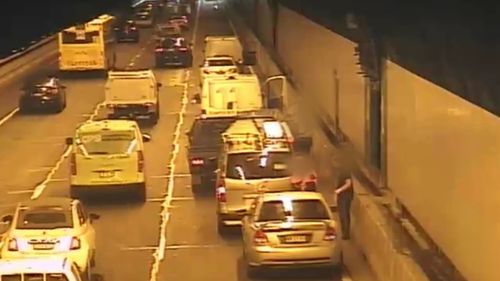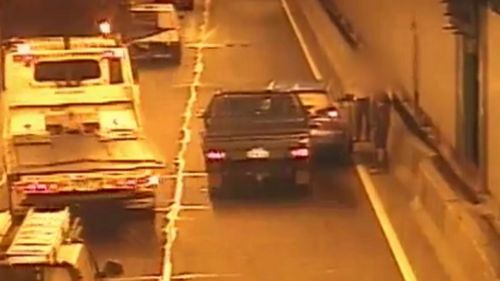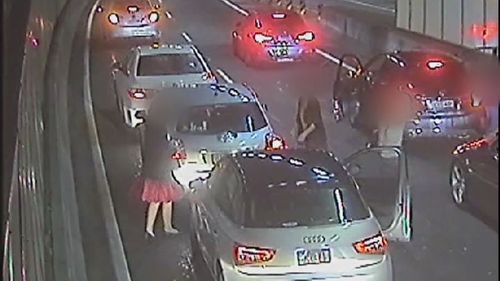A minor bungle becomes a major headache inside one of Sydney’s busiest tunnels.
A nose to tail accident – typical of 70 per cent of accidents on our roads – brings traffic to a sudden halt inside the Eastern Distributor. It appears that just two cars are involved.
But at least eight stop with people pouring out of their cars to take a look. One bloke even runs across the lanes on his mobile phone, bringing both lanes to a halt and causing the northbound traffic to build up where cars should be flowing through at 80km/h.

It’s a similar story in the Epping-Norfolk tunnel of the M2 motorway, only this time the speed limit is 100km/h.
A group of men get out of their cars to take a sticky beak, narrowly avoiding passing cars and trucks.
What most people don’t realise is you don’t have to stop to exchange details there and then.
“It’s not essential for people to stop at that point to exchange details, you are allowed to move your car to a safe location,” Craig Moran, executive director of customer journey management, Transport for NSW told 9News.

“If you do get out of your car, you’re putting yourself at risk because you’re stepping into live traffic and you’re putting other motorists at risk as well who will avoid you and may cause another crash, which is really what we don’t want.”
Delays as a result of a minor crash inside a tunnel can be significant – but they don’t always need to be.
“The flow-on effect of a minor crash can be significant congestion,” Mr Moran said.
“Where people stop to exchange details other people might stop to get out and they think they’re helping but they’re actually impacting traffic and the smooth flow of other people around the network.”
Mr Moran said there is no need whatsoever to get out of your car.

Drivers involved should move to a breakdown bay or exit the tunnel altogether and pull over in a side street or safer location to exchange details.
If that’s not an option, put your hazards on and wait for an incident response vehicle.
All tunnels are monitored 24/7.
“The clear message to people is never walk in live traffic,” Mr Moran said.
“In motorways we’re talking about high-speed environments, they’re constrained environments in terms of space, so there’s not a lot of room for people to move around. And it is really unsafe to get out of your vehicle and move around in traffic regardless of the circumstances.”
Adam Lloyd, head of operations NSW at Transurban, said an incident response vehicle can be dispatched in moments.

“It’s not a footpath, it’s actually a motorway and we’re urging people to not take that unnecessary risk, moving around when there’s oncoming traffic,” Mr Lloyd said.
“We are urging drivers and motorists to not stop. Drive on. If your vehicle is driveable, remove yourself from the scene. If your vehicle is not driveable, stay in your vehicle, put your hazards on and remain there. We have trained operators monitoring the motorway 24 hours a day seven days a week.
“Stay put, you’ll be seen and help will arrive within minutes.
Mr Lloyd also warned of the traffic congestion such accidents can cause across the network affecting thousands of motorists.
This content first appear on 9news
